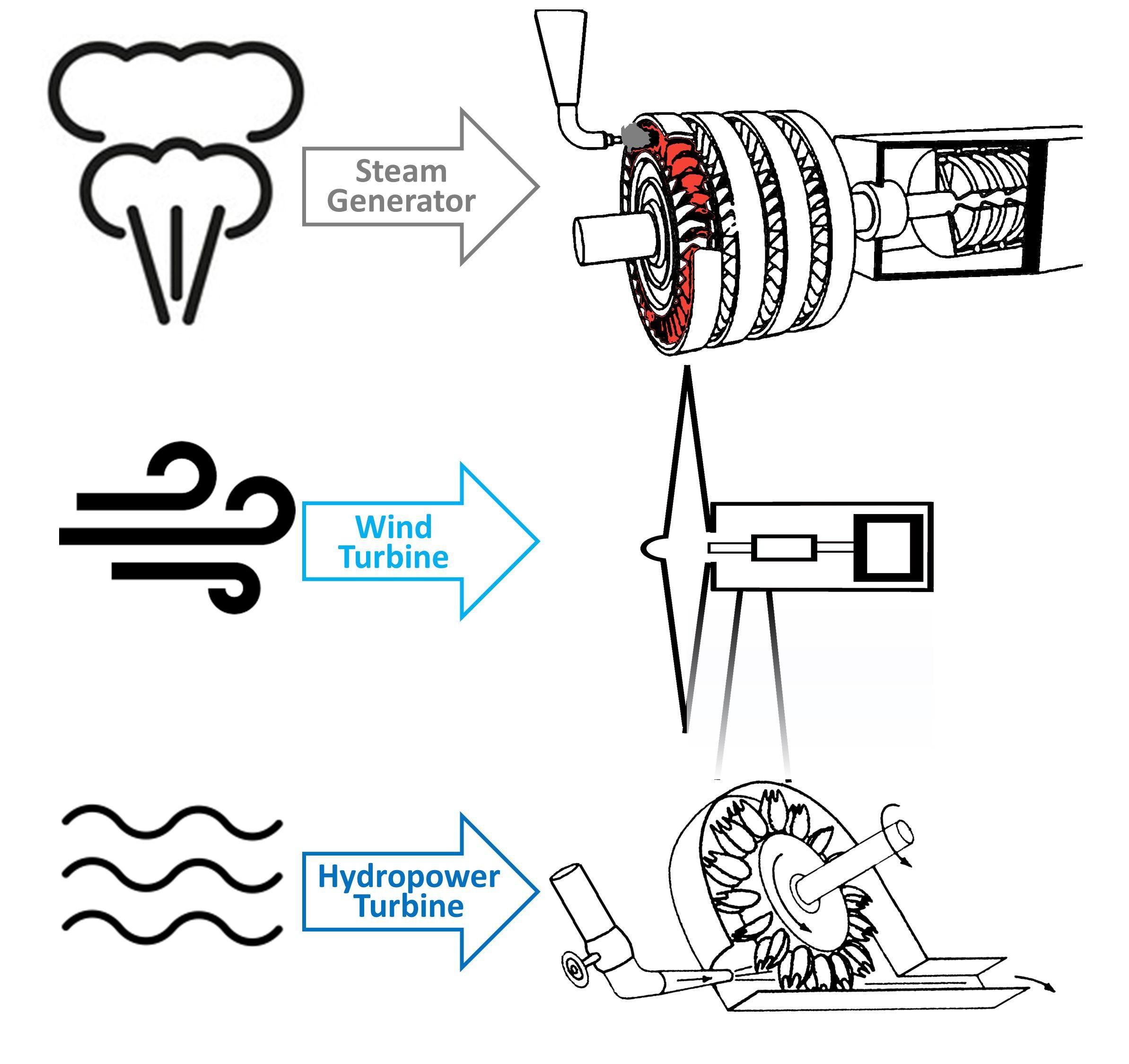
EBR-63 | February 2022
Energy Used in Homes, Businesses, and Farms is Typically Supplied as Heat or Electricity
Energy comes in many forms, including heat, light, chemical, mechanical, and thermal. Energy can also be converted from one form into another. For example, plants convert solar energy into chemical energy through photosynthesis. Burning wood converts the chemical energy within the biomass into heat and light. Combining these examples demonstrates how the heat and light energy created by the stove can be traced all the way back to solar energy (Figure 1). While this example demonstrates several energy conversions, there are many other forms of energy and conversion processes that are a part of our daily lives.
The energy that we use in our homes, farms and businesses is supplied as electricity or heat. Electricity can be generated by solar photovoltaics (PV), among other sources. Electricity is particularly important because it can be converted into virtually any other form, including heat, light, or chemical energy. There are many common technologies in your home, farm, or business that easily convert electricity into different forms of energy. Practical examples include the conversion of electrical energy into light energy through a lamp, heat energy using an electric baseboard, or even chemical energy stored inside a rechargeable battery.
Since solar PV involves creating electricity from solar energy–and considering the diverse applications of electricity–the generation of electricity will be further explored throughout this report. We will review the primary sources of energy, the conversions between different forms of energy, and the total energy reserves available. We differentiate between renewable and non-renewable energy, as well as thermal and electric energy. This report includes discussions of the primary sources of energy conversions, the relative size of solar energy compared to traditional sources, and the historic progress of solar PV.
Primary Energy Source is Starting Point for All Energy Conversions
In Figure 1, the Sun is the primary energy source from which all subsequent energy conversions initiated. Figure 2 illustrates additional energy conversion pathways originating from the Sun. The top two pathways represent energy conversions involving biogenic (or living) resources which convert energy through photosynthesis. This includes wood and other plant matter that may be converted into useful chemical energy such as ethanol and biodiesel.


Under different conditions, those same photosynthetic products can be converted to energy-dense fossil fuels (such as coal, crude oil, and natural gas) through long geological processes. Coal, natural gas, and petroleum are called fossil fuels since they are formed over thousands of years from the buried remains of ancient plants and animals.
Heat and light energy from the Sun can also be used indirectly by harnessing and converting the energy produced by solar-induced weather events, including wind, waves, precipitation and running water. The same heat and light energy from the Sun can be directly used in solar thermal or solar photovoltaic (PV) applications, the latter of which is the focus of this publication.
The Earth is another primary source of energy. The Earth contains minerals like uranium (which is used in the nuclear energy industry), while geothermal energy originates from the heat contained within the Earth. Another form of primary energy is related to the Earth's movement, as well as satellite movement within the solar system. For example, the moon moves around the Earth, which is partially responsible for tides and tidal energy. The force of gravity resulting from Earth's orbit and attraction to the Sun may provide some forms of usable energy. Figure 3 depicts several examples of primary energy sources derived from the Earth and the Earth’s movement.

Electricity Created Using a Generator
On a basic level, a generator works by moving magnets and a copper wire across one another which creates an induced current of flowing electrons through the wire. Larger quantities of electricity can be generated by connecting the generator to a turbine, a simple device where motion is generated and captured from a moving fluid like air, water, or steam. As the turbine spins, the magnet and wire move against one another more rapidly.
Energy generation systems are often defined by the fluids that move their turbines. For example, a steam generator uses boiling water to create the high-pressure steam which spins the turbine. The energy needed to boil the water can come from a fossil fuel source, geothermal heat, fission reactions in nuclear power reactors, or another source. However, steam is not the only fluid that can be used to turn a turbine. Figure 4 shows how gas, wind or water turbines also are used to generate electricity. While these traditional methods of electrical generation clearly differ from solar PV in terms of mode of operation, their widespread and abundant use is necessary for understanding Maryland’s diverse energy market.

Reviewed by:
- Daniel Bacellar, PhD
Center for Environmental Energy Engineering (CEEE) - Arjun Makhjani, PhD
Institute for Energy and Environmental Research - Fariborz Mahjouri, PhD, PE
Aurora Energy
| DREW SCHIAVONE dschiavo@umd.edu This publication, Energy Used in Homes, Businesses, and Farms is Typically Supplied as Heat or Electricity (EBR-63) is a part of a collection produced by the University of Maryland Extension within the College of Agriculture and Natural Resources. The information presented has met UME peer-review standards, including internal and external technical review. For help accessing this or any UME publication contact: itaccessibility@umd.edu For more information on this and other topics, visit the University of Maryland Extension website at extension.umd.edu University programs, activities, and facilities are available to all without regard to race, color, sex, gender identity or expression, sexual orientation, marital status, age, national origin, political affiliation, physical or mental disability, religion, protected veteran status, genetic information, personal appearance, or any other legally protected class. |